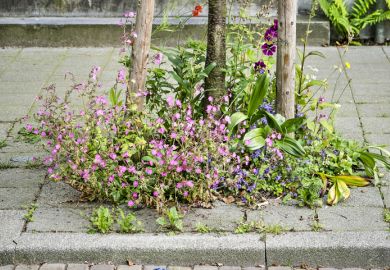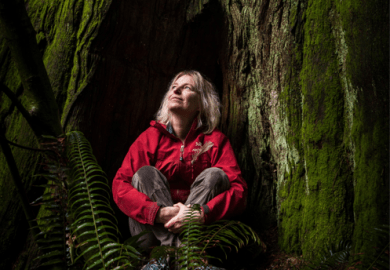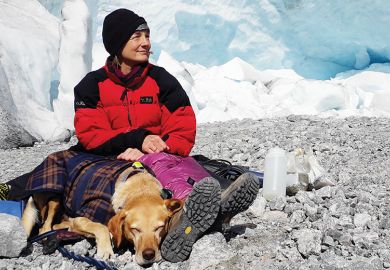After the destruction of Pompeii by Mount Vesuvius, the next most famous volcanic disaster is probably that of St Pierre in Martinique.
On May 8 1902, the eruption of Mount Pelee smothered and incinerated St Pierre. Between 8.02am and 8.05am, while its inhabitants were eating breakfast, during less time than it takes to boil an egg, nearly 30,000 people died in the most lethal volcanic event of the 20th century. The city, an enchanting place reminiscent of many provincial cities in France, was left a smoking ruin. Even today, after two world wars, it is hard to comprehend the speed and scale of such a catastrophe. These three books, each from a somewhat different perspective, help the non-scientific reader to grasp the complexity of what appears elementally simple.
In 1902, the scientific understanding of volcanic eruptions was not very much further advanced than when Pliny the Younger wrote his letter about Vesuvius in AD 79. Indeed, Alwyn Scarth, a geographer who has written in depth on volcanoes, prefaces his engaging account with a frank admission: "I would have stayed in Saint Pierre on the morning of May 8 1902 to enjoy the Ascension Day holiday. I would have kept cool and accepted the arguments of the experts. Mount Pelée could bring us no greater harm than a shower of dust and ash." As Scarth points out near the end of his book, even Alfred Lacroix, the French geoscientist who compiled the classic study of the Pelée eruption, concluded - and this was with the benefit of hindsight - that "none of the events that might logically have been forecast in fact occurred".
In particular, as with Vesuvius, there was no lava flow. Instead, Pelée produced a nuée ardente, a "glowing cloud" - a term coined by Lacroix (though now largely replaced by "pyroclastic surge") - that hurtled from the crater in the direction of St Pierre at some 190kph carrying volcanic fragments and gases at high temperature lit from within by zigzags of lightning and explosive flashes. "It is a pity that Shakespeare never described a nuée ardente ", writes Scarth, which he calls "the most devastating and murderous instrument in the volcanic repertoire". No scientist yet knew of it, though its existence during the gigantic eruption of Krakatau in 1883 was suspected. Furthermore, had Pelée happened to blast the nuée ardente in any other direction, St Pierre would have survived.
"Thus, in terms of what Mount Pelée might have been expected to produce in 1902, the nuee ardente caused the same effect as a nuclear bomb would have produced at the Battle of Waterloo."
Two of these books are written by scientists, though Ernest Zebrowski is a physicist not a volcanologist, while the third is by an ITN news reporter, Peter Morgan, who also writes plays. All three use eyewitness accounts in a lively way to describe the build-up to the eruption, the devastation of St Pierre and surrounding areas as the eruption continued through 1902, and its impact on a racially complex plantation society with its white French elite, politically aware growing mulatto middle class and illiterate black working class - all dependent on far-off Paris. The most obvious distinguishing features are that Scarth is a Francophile most involved with the political, social and economic aspects of the eruption (geologists other than Lacroix are barely mentioned); Zebrowski is more detached from the personalities and gives most attention to the scientific aspects; while Morgan focuses on the rather grotesque but fascinating story of the black prisoner, Ludger Sylbaris, locked in the city's jail, who somehow survived the inferno and was later toured by Barnum and Bailey's "Greatest Show on Earth", in which he was billed as "the only living object that survived in the 'Silent City of Death'". Though all the books are illustrated, the photographs selected by Scarth are the most numerous, varied and clearly reproduced; they allow the reader to compare many parts of St Pierre "before" and "after".
The key questions about the disaster, as with all volcanic disasters, are: could it have been forecast, and should the affected area have been evacuated in time? All three authors answer no to both questions, given the state of knowledge about Mount Pelée, and about volcanoes generally, at the time. But Zebrowski makes the point that if Pelée had waited a mere week before its first big blast, the situation could have been radically different since full and accurate information would have reached St Pierre of a volcanic disaster on May 7 on the island of St Vincent, in which La Soufrière killed a large number of people with a "death cloud". (Instead of being alarmed by La Soufrière, people in St Pierre concluded that they were now safer because the eruption would have relieved the pressure on Pelée.)
It is true that Mount Pelée had a history that might have alerted locals more than it did. We now know it has erupted significantly some 25 times in the past 14,000 years, which is why the Carib Indians called it Fire Mountain. But the only eruptions since the arrival of the French had been small ones in 1792 and 1851, which caused no damage or injury and were quickly forgotten - unlike Martinique's hurricanes, tidal waves and earthquakes. By 1900, when Pelée awoke again, the summit was known chiefly as a picnic spot for the physically fit who could cool off in the crater's lake.
Of course, there were citizens who decided to leave the city and many who agonised about their fate, whether they were evacuated or not. But there is no doubt at all that the vast majority of the population, which actually grew in the weeks before the disaster, supported the view of the island's governor, Louis Mouttet, that St Pierre would be protected from floods, mud and lava flows by intervening river valleys and ravines. He showed his confidence by moving to St Pierre from the capital with his wife.
Both of them died in the eruption. Afterwards, Mouttet was the main focus of blame for the disaster, which became entangled in local politics. A plantation owner and industrialist who had been due to stand for election to the lower house of the French parliament on May 11, and who finally fled the city with his family in literally the last hour before the eruption, alleged that the governor, ordered by his masters in Paris, had deliberately ignored the many danger signals and had threatened his civil servants with dismissal if they left their posts, so that the election could take place as planned. This allegation was soon inflated by others into the completely baseless charge that Mouttet had used troops to prevent the citizens of St Pierre from leaving.
Yet it is difficult to exonerate Mouttet totally. Scarth is at pains to defend him in a chapter entitled "Lies about Louis Mouttet". He claims: "No letter written by any civil servant based in St Pierre makes the slightest mention of coercion." But Zebrowski states that Mouttet sent telegrams to officials who had requested leave or an immediate transfer threatening them with instant dismissal and a blackball from any government position. As for the St Pierre politician Fernand Clerc, Scarth calls him "rather despicable... out for short-term gain". Yet it is clear from the fuller picture of Clerc given by Zebrowski that he could act bravely and honourably. And, after all, it was Clerc who got the volcano right, not the unfortunate Mouttet - for whatever reasons.
Zebrowski summons the contrast of the frog dropped into cold water that is then heated with the frog dropped into boiling water to explain the ill-fated behaviour of St Pierre in April/May 1902. Had the people not grown up with their familiar old volcano, they would have "sprung out (of the city) without hesitation like frogs from a hot cauldron". Probably so, given the pleasures of St Pierre described in these three books. St Pierre, the "Paris of the Caribbean", was indeed a seductive tropical paradise, judging from Lafcadio Hearn's classic Two Years in the French West Indies (1890). But Hearn also had a disturbing premonition while walking in the city's botanic garden under the volcano: "You see no human face; but you see all around you the labour of man being gnawed and devoured by nature - broken bridges, sliding steps, fallen arches, strangled fountains with empty basins; and everywhere arises the pungent odour of decay... it never ceases to remind you that where Nature is most puissant to charm, there also she is mightiest to destroy."
Andrew Robinson is literary editor, The THES, and the author of Earthshock and The Shape of the World.
La Catastrophe: Mount Pelée and the Destruction of Saint-Pierre, Martinique
Author - Alwyn Scarth
ISBN - 1 903544 11 4
Publisher - Terra
www.terra publishing.net
Price - £19.95
Pages - 256
Register to continue
Why register?
- Registration is free and only takes a moment
- Once registered, you can read 3 articles a month
- Sign up for our newsletter
Subscribe
Or subscribe for unlimited access to:
- Unlimited access to news, views, insights & reviews
- Digital editions
- Digital access to THE’s university and college rankings analysis
Already registered or a current subscriber?



